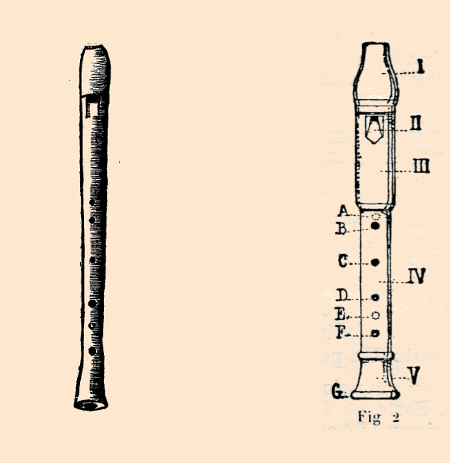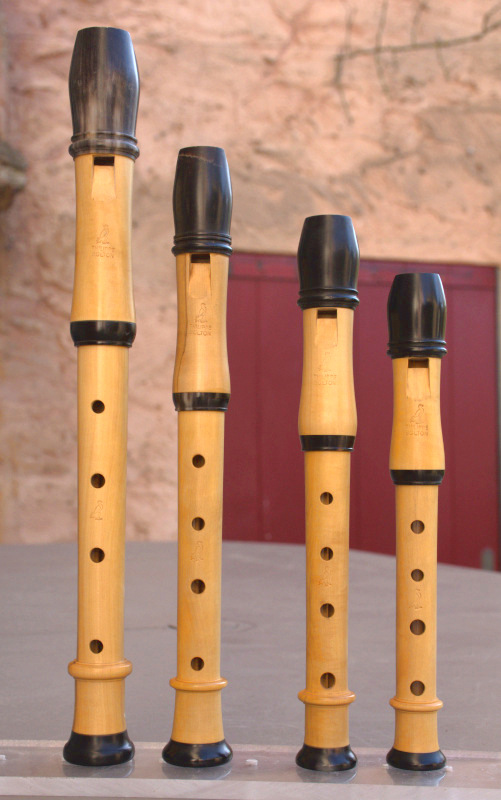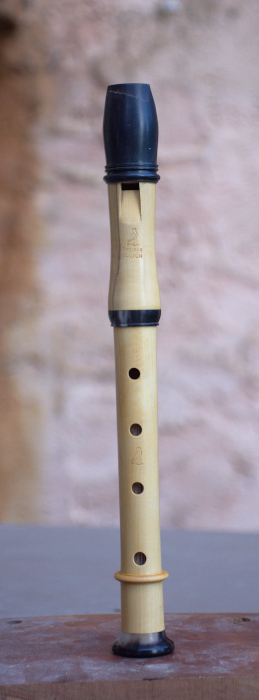PHILIPPE BOLTON
flageolets & recorders
A "beak flageolet" after an unsigned instrument
(late eighteenth or early nineteenth century)
|
|
The so called "beak" flageolet (flageolet à bec) is the oldest form of the instrument. Its existence has been reported in texts from the sixteenth to the nineteenth centuries.

The instrument opposite is a copy of a beautiful boxwood French flageolet that was probably made at the end of the eighteenth century.
Like all French flageolets it has four holes in front and two thumb holes on the back, of which the upper one is used for playing high notes as on a recorder. It is tuned in F at 435 Hz. |
This "beak flageolet" is now made in four different sizes, from left to right:
|

|
You can listen to the flageolet in D here
La Précieuse, a country dance by Joly, arranged for the flageolet by P. J. Chaxelle (ca 1792),
The Following fingering charts are available:
Other flageolets
A nineteenth century "windcap" flageolet after Prudent Noblet


A bird flageolet after an anonymous late eighteenth century instrument
